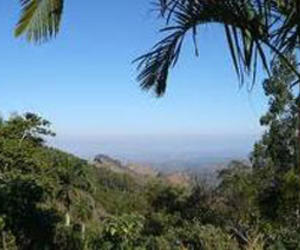Forested Areas Increase in Central Cuba
- Submitted by: manso
- Society
- 06 / 04 / 2011

The province has also excelled in other areas of environmental protection. As an example Gonzalez noted that 23 of the companies included in the business efficiency improvement program have Environmental Management Systems in place
By: Yahily Hernández Porto. juventudrebelde.cu. 2011-06-03.10:43:30 EST. CAMAGUEY.— Forest areas increased by 23 percent over the last decade in the central Cuban province of Camaguey, home to 12 percent of the country’s total forestlands.
The head of the Environment Section at the Ministry of Science, Technology and the Environment (CITMA), Mayra Gonzalez, said that 357,097 hectares of trees have been planted by reforesting commissions and the institutions in charge of the forest management.
She said that 80 percent of the areas in the province with a potential to be forested had been covered. Sixty-seven percent of these ecosystems correspond to natural forests, only ten percent to planted forests, and three percent is covered by young woodlands.
She added that 20 percent of the land is still to be planted, which is one of the main goals of reforesting institutions and commissions.
“Our main goal is to gradually plant deforested as part of a comprehensive program to manage woodlands. This helps decrease forest fires, the loss of vegetation, and soil degradation,” she added.
Gonzalez noted that the growth and conservation of forests, which are so important for human life, depend on the responsible behaviour of people.
The province has also excelled in other areas of environmental protection. As an example Gonzalez noted that 23 of the companies included in the business efficiency improvement program have Environmental Management Systems in place. She pointed out that seven local companies have been declared CFC-free companies, that is, companies that make no use of ozone-depleting substances.
Gonzalez added that 27 commercial refrigeration facilities had been restructured to begin using non-ozone-depleting refrigerants. Among these are facilities attached to the Ministry of Foreign Trade, the Ministry of the Interior, the Ministry of Public Health, the People’s Power and the Party.
In this regard, she noted the work done at the Nuevitas Hospital, where a water cooler was installed that considerably reduced power consumption, eliminated the use of chlorofluorocarbons, and improved the quality of services.
She also mentioned that the province had accomplished outstanding results in the field of environmentally friendly and sustainable productions, one of the main indicators used to assess the protection of the environment. Such is the case of the 10 de Octubre Thermoelectric Plant, the Industrial Gas Co., the Carlos Manuel de Cespedes and Argentina Sugar Companies, and the Provincial Recycling Company.
The local government has been prioritizing recycling efforts and the rational use of batteries.
Comments